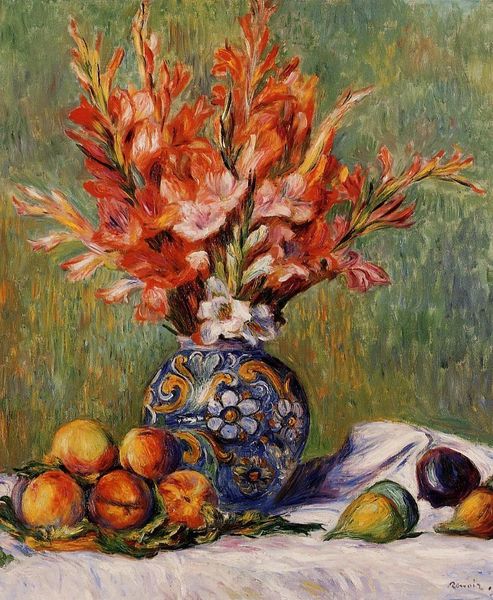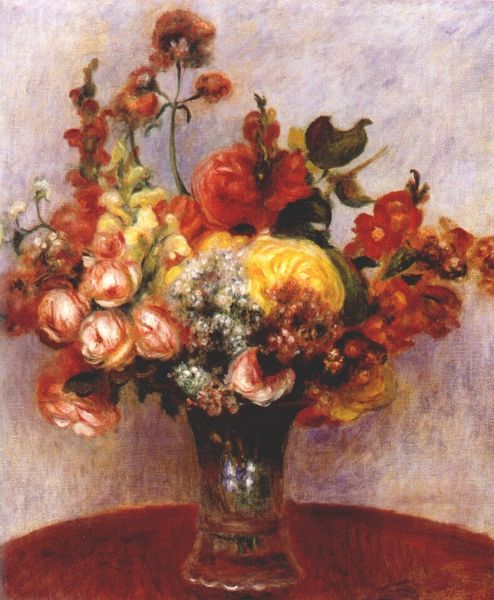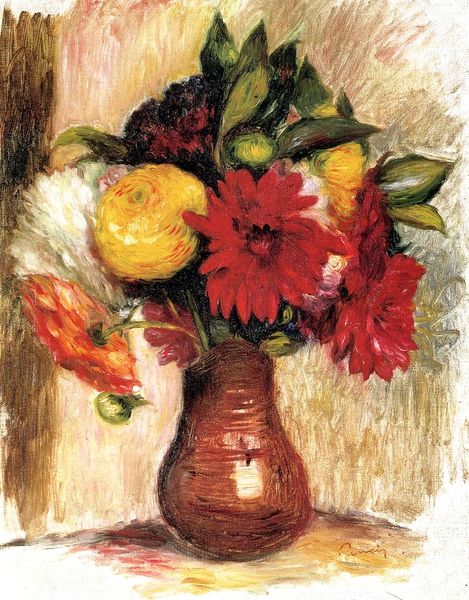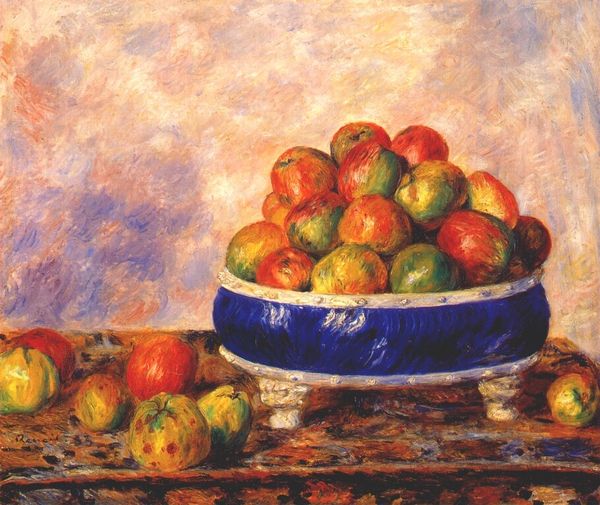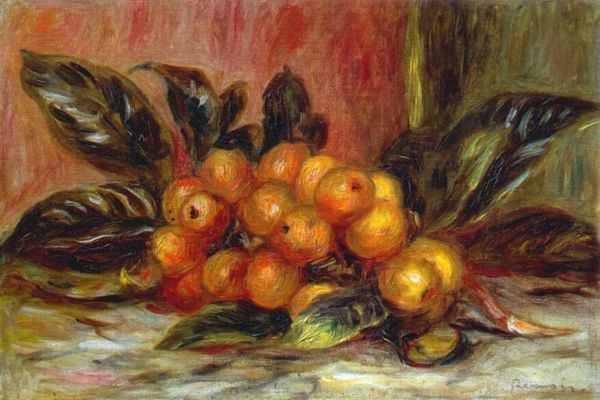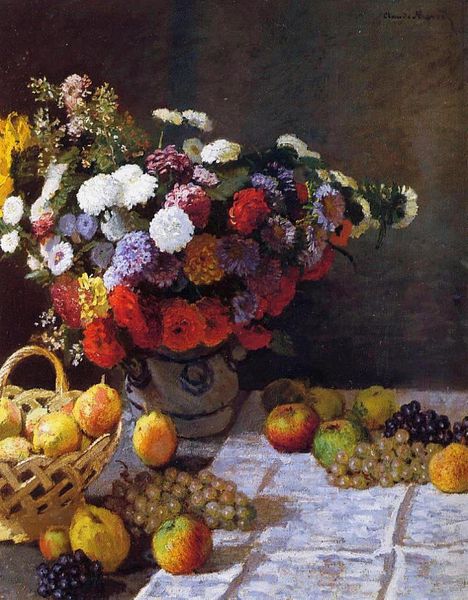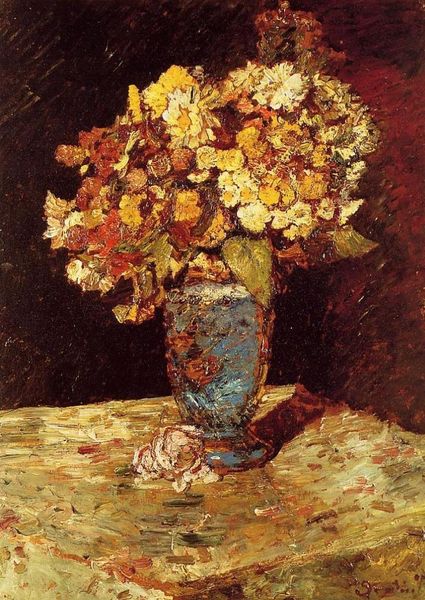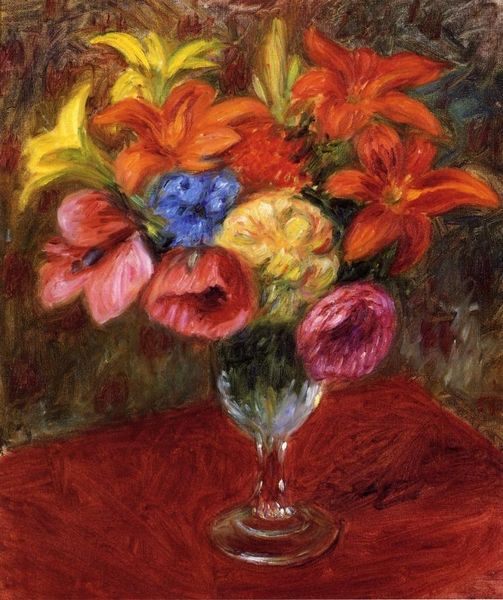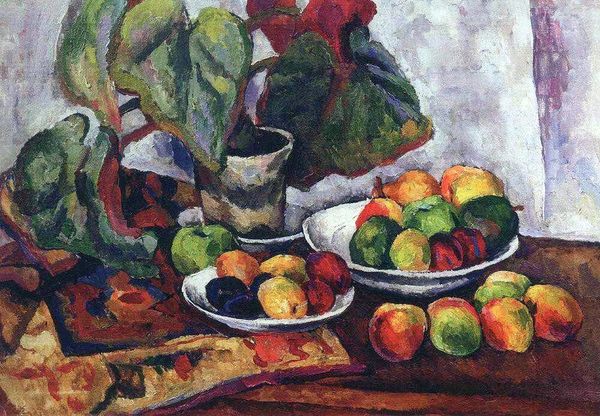
painting, oil-paint, photography, impasto
#
still-life
#
painting
#
impressionism
#
oil-paint
#
photography
#
oil painting
#
impasto
#
fruit
#
post-impressionism
#
modernism
Dimensions: 54 x 65.7 cm
Copyright: Public domain
Curator: Pierre-Auguste Renoir's "Still Life Flowers and Fruit," painted in 1889, invites us to contemplate the artist's evolving approach to capturing fleeting beauty. What's your initial reaction? Editor: Well, I’m immediately struck by the impasto. You can really see the physicality of the oil paint – it's not just about depicting fruit and flowers, but also the act of applying the material to the canvas. There's a definite tension between representation and abstraction. Curator: Absolutely. And beyond that texture, this piece exists within a pivotal period of post-Impressionism. It reflects a moment when artists questioned traditional methods of representation, moving toward subjectivity and evoking emotional and sensory experience, in contrast with rigid realism or the Salon style. Editor: Right. I see that echoed in Renoir’s choice of objects, and also the production of them. Like this vase… it is ornate, and very clearly mass produced for a specific demographic. Where did that come from, and what does its availability at the time say about production in the decorative arts? Curator: Those questions are precisely what position this still life within broader cultural discourses of its time. Consider that the democratization of luxury items, as well as changing gender roles, led to evolving notions of taste and domesticity in the late 19th century, and influenced artistic expression across painting, sculpture, architecture, and craft. Editor: Exactly, so when looking at the construction of the objects represented and asking questions about their origins, we can look at broader narratives about labor and value. In many ways the visual delight overshadows this interrogation, but you know the vase did not just magically appear and make it onto Renoir's table, there were people involved. Curator: I see that, I am interested in the emotional resonance of this image: It is beautiful and pleasant, however in my interpretation of the grapes there is something almost sinister - perhaps not as straightforward and naive a piece as some may view it. Editor: It shows how an attention to materials can unveil both the seen and unseen dynamics that are very relevant even to our experiences today. The impact that access and cheap production has had on culture cannot be understated, even if Renoir chose not to state it literally here. Curator: Exactly, Renoir may or may not have fully intended all of the implications we’re discussing. But art holds that unique quality of reflecting broader truths regardless of intention. Editor: Well said! This image has me pondering, maybe it's time to finally organize that still life painting class, with a nod to Renoir's texture of course!
Comments
No comments
Be the first to comment and join the conversation on the ultimate creative platform.
